#they both went yes i want to produce some queer horror
Text
deeply madly and passionately in love with how joe and patrick both independently dedicated their creativity to queer horror stories with WILDLY different tones. joe made the axe (grisly adult-oriented comic) and patrick wrote music and lent voicework to dead end paranormal park (soft kid-friendly cartoon) happy pride everyone
#*making poasts#like theyre so similar but SO different in their tastes its incredible#they both went yes i want to produce some queer horror#and they both did that in the most VASTLY disparate ways possible#the axe is so good also...ive only got the first issue but like. man i love these kids.#joe trohmans the only emo band member who should write comics from now on ive decided
139 notes
·
View notes
Note
i saw a post saying that alastor is an aphobic caricature because he’s portrayed as heartless and manipulative. is this true?? i didn’t even know asexuals were stereotyped like that
I'm gonna talk about both asexuality and aromanticism in this post because 1) creators have confirmed that Alastor is both ace & aro (the ace part was confirmed much earlier, which is why it's talked about more often than the aro part), and 2) the fictional tropes I'm talking about usually apply both to aces & aros, mainly because the creators using them typically don't separate sexual attraction from romantic attraction.
So, since you hadn't heard of that stereotype before, here is a thing that is true about fiction:
In media—particularly sci-if/fantasy (where you can have characters manipulated on a soul-deep level by technology/magic) and crime/horror fiction (where you have the ever-pervasive remorseless killer and "heartless sociopath" tropes)—characters are often portrayed as "incapable of love" as a way to indicate villainy. (Widely-known example I mentioned just a couple days ago: Voldemort from Harry Potter is described as having been born incapable of feeling love due to Magic, which puts him at odds with heroes who are shown to draw their greatest strength from love.) Often, an incapacity to feel love is also indicated through an incapacity to feel sexual desire (because most allosexual alloromantic people who aren't involved in the queer community conflate romantic desire and sexual desire as the same thing).
In most cases, it seems like the logic behind this is "if I want to indicate that this person is cruel and heartless beyond all measure, what better and more extreme measure can I take than to say that they are simply completely incapable of feeling love/desire?" and this media is usually produced by people to whom it has not occurred that there are, in fact, totally normal people in the world who don't feel love or desire, and maybe there's a better way to suggest that characters are evil than to accidentally lump them in with those people?
In cases like that, usually the character isn't even called ace or aro, especially in older media. Although I wouldn't be surprised if there are some crime procedurals that throw around "our suspect is a cold, manipulative, asexual man" because it's a clinical-sounding buzzword they can use but don't totally understand; but whenever I've seen this trope pop up, a character's purported lovelessness is never treated like a sexual orientation, but rather like a negative mental condition. A negative mental condition that just happens—in many cases probably by accident—to be described the exact same way as actual people's orientations.
I'm sure there are also examples of people going "I'm going to make this character asexual" and then going "I don't know how to write an asexual character except by making them cold, callous, and unfeeling," but I feel like that's less relevant to the background of Alastor's character than the characters who are villains that get asexuality pasted onto them to enhance their villainy.
So on to the question of Alastor.
Now, without an account from Vivziepop on how Alastor's orientation was decided, I don't know her motives in making him ace/aro. Considering that his lack of sexual/romantic desire is being talked about by the creators as an orientation rather than as a negative personality trait, I doubt that she went "I want him to be peak evil so I'm going to sprinkle lovelessness on him to enhance that evilness." Rather, I would bet that it happened the other way around: there's good odds that Vivzie created this murderous cannibalistic character with shallow emotional connections to other people, then thought about his orientation, then went, "I really can't see him ever being attracted to anyone?? Better call him ace/aro."
So, yes, I think that he does end up falling into some of the same boxes as the "loveless evil manipulative villain (who is accidentally coded as ace/aro)" trope. But I don't think it was intentional, and—more importantly—I think there's room in his character to subvert the worst implications of that trope.
Ways that could happen would be by giving him, through gradual character growth, close platonic emotional relationships & a growing conscience without removing his asexuality/aromanticism, showing that loveless doesn't mean heartless; or simply by making his asexuality/aromanticism seem understandable, relatable, and harmless, and most importantly separate from his cruelty.
There are hints already in canon that he could go that way. His brief moment of confused panic in reaction to Angel's proposition in the pilot is one of the most succinct ace jokes I've ever seen, it goes against the "loveless villain is perfectly in control of his emotions and above such shallow things as desire" trope so common to accidentally-ace villains, and it presents his "where the hell did that come from??" reaction as understandable/relatable rather than unfamiliar & alienating. And inwhat few glimpses we've gotten of his prequel comic so far, it looks like Alastor keeps doggedly trying to start conversations with people and being frustrated when they run from him in terror—showing that he wants to reach out and make some sort of connection with other people, so he still desires platonic connections even though he doesn't want romantic/sexual connections. If those trends continue, I'll be satisfied.
So, summary: is he an aphobic caricature? I wouldn't go that far. Does he have significant overlap with "loveless = heartless" villain tropes that don't do ace & aro folks any favors? Yeah, I'd say he does. Could he still end up a well-rounded and interesting piece of ace/aro representation? Yes, he definitely can—but if so, it's going to be in spite of the fact that he's a manipulative cannibalistic serial killer. Like, in terms of "positive ace/aro representation," he automatically gets 20 points docked off his final score before the test even begins—but he doesn't get an automatic failing grade.
For my part, as an ace/aro viewer, I'm waiting to see where they go with his character with eagerness, not dread.
93 notes
·
View notes
Text
A Brief History of LGBT+ Characters and Why the Death of Adam in Voltron is Worth Being Upset About
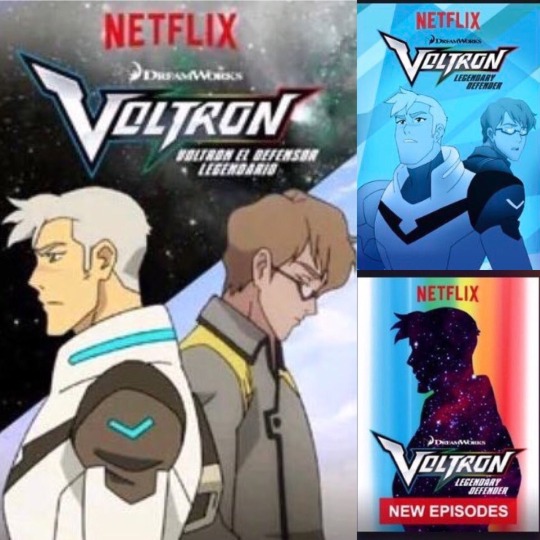
So uh.... Good morning.
So I think it’s pretty obvious by now that the reception to season 7 has been less than... good. The fan base has been shattered. People are upset, angry, and abandoning this series in droves (I’ve lost over 50 followers as I write this, just from people no longer wanting anything to do with this show) and have been incredibly vocal as to the reason why.
They killed Adam.
After two weeks of receiving praise for the relationship that was revealed at San Diego Comic Con, fans discovered on Friday night that Adam’s existence would be short lived, further contributing to this popular “Bury Your Gays” trope.
And I’ve seen people confused at this outcry. They don’t understand why people are so upset at this tiny side character’s death. What’s the big deal, right? It’s war! There’s supposed to be casualties!
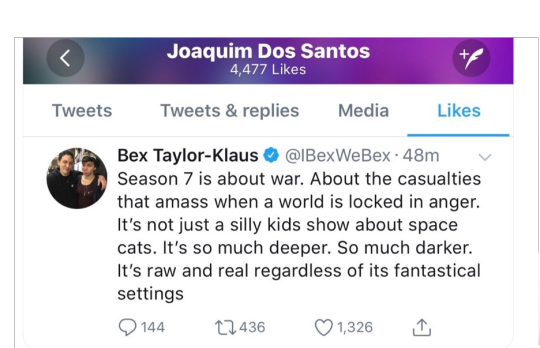
And to that kind of response I have to narrow my eyes and go:
“Oh.... maybe you understand the history of this.”
Because it is a history. A rich one. “Bury your gays” isn’t a trope in the same why that “Fake dating” is a trope. It’s not popular out of coincidence and I feel like many people are ignorant of that, which is FAIR! Because most voltron fans are young, most tumblr users are young, so I don’t expect you to be watching documentaries on LGBT+ cinema in between studying for your chemistry exams.
So that’s where I come in. Buckle in children as I take you on a journey on why the “Bury your gays” trope exists, and the harmful ramifications that it has had on the LGBT+ community since its inception.
So lets go back. Way back to the 1920′s when homosexuality, or at least homosexuality adjacent themes were seen on screen.

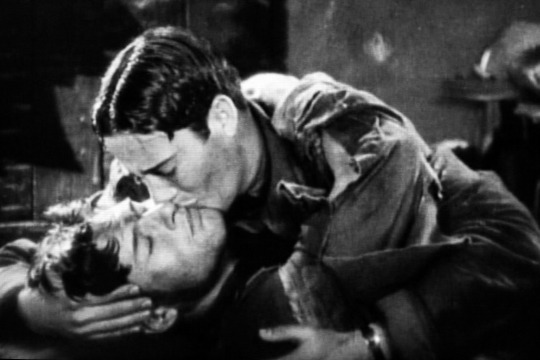
A time where a bro could kiss his bro, and it was seen as heart wrenching and realistic (Wings, 1927). A time where Marlene Dietrich could wear a suit better than a man, and flirt and kiss a lady just because she fucking could (Morocco, 1930). A time where gender roles were a bit looser, and there wouldn’t be an outcry over such imagery.
But as the great depression continued, and film producers became desperate to get butts in seats at the cinema, these LGBT+ themes became outright explicit. Raunchy even. Used for titillation and shock value.
“Have you seen that new picture, Doris? The one where the roman emperor has the hot male sex slave?? Mmmmm scandalous!”
But with this rise of LGBT+ characters and interactions used for shock value, also came the rise of public outcry. The catholic church (those debbie downers) started boycotting films. This lead to the formation of the PRODUCTION CODE, which is a fancy way to say THE CODE THAT WILL NOW CENSOR THE SHIT OUT OF YOUR FILMS in 1934.
Backed by catholic activists, the code made it impossible for LGBT+ representation to exist on film.
But did they?? See, this is actually were we start to see the development of “Queer coding”. Where actors and directors got savvy, and let you know a character was gay, whilst never explicitly stating so. It was subtle enough that it got past censors, but clear enough that audience members, especially LGBT+ people, got clued in.
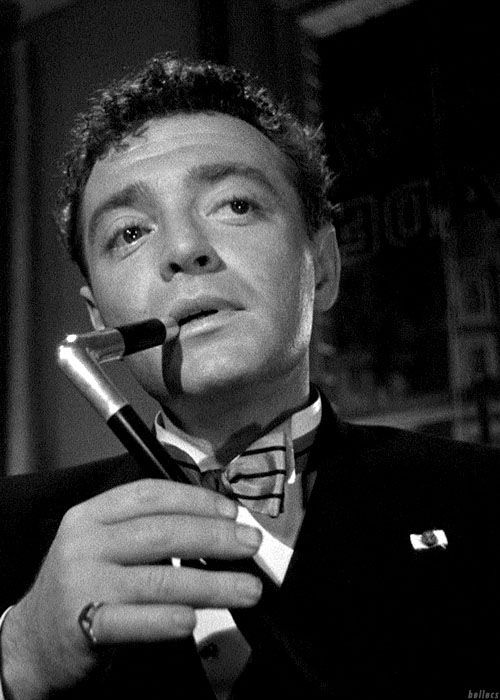
Yeah Peter Lorre, you put that phallus shaped object next to your mouth a lot. They’ll get what your implying, don’t you worry.
Oh, I’m sorry.... did i say you couldn’t have LGBT+ characters?? My mistake, you totally fucking could. Explicitly even.... if they were the villain. Religious people were totally cool if the villain in your film was LGBT+, because to them, that’s what LGBT+ people were.... villains.
Film’s like Rebecca, Dracula’s Daughter, and Alfred Hitchcock’s Rope all centre around truly horrifying and despicable villains... who are all gay. LGBT+ villains became such a staple in horror films during this time that it lead to a whole near character archetype! We have the damsel in distress, the heroic soldier, the wise old man, now welcome the rise of the:
PSYCHO QUEER.
Yikes.
But why I’m talking about this so much is because this popularity in LGBT+ villains is what creates the “Bury your Gays” trope.
Because the villains.... always die.
It’s their comeuppance. Their karma. Of course bad people will die and the heroes will go one to live a happy life! But what crime are we punishing these villains for?
The message these movies gets across to their audiences is that “If you are gay, you are a bad person... and bad people deserve to die”. Because Gay and villain were so synonymous with each other, they become one in the same, and as we all know by now REPRESENTATION MATTERS.
This influences how society views LGBT+ people, so that in 1952, when the PRODUCTION CODE of YOU BETTER NOT CONDONE ANYTHING SINFUL IN HERE BECAUSE JESUS DOESN’T LIKE THAT is torn down, things still don’t get much better for LGBT+ representation.
LGBT+ characters no longer have to be villains, but society is still not super cool with LGBT+ people, so now we get a new archetype: The self hating tragic gay character. And often? These characters kill themselves, such as in 1961′s The Children’s Hour. Because this is palatable to audiences who do not condone homosexuality in any way, but watching an LGBT+ struggle with themselves? Watching them become overwhelmed by guilt and hatred until they decide that death is the only way out? How tragic! How cursed they are! How pitiful! How... marketable.
But to see LGBT+ characters end up happy? Audiences at this time would not have stomached it, because to them, being LGBT was immoral and these characters were not deserving of happiness. A good analogy might be how modern audiences would view a film with a drug addict character in it. The addict either succumbs to their addiction and dies tragically, or they “Go straight” and have a happy ending. For these audiences in the 50s and 60s the only happy ending was a straight ending.
Then in 1969 we get the Stonewall Riots, and in the 1970s things actually look alright.
That is until the 1980s and society finds a new reason to hate, fear and vilify LGBT+ people. The AIDS crisis wipes out lives and almost all positive representation in the media. This fear is echoed in film as LGBT+ people become villains again. Sleepaway Camp and Cruising are such examples.
The 90′s are better. Whilst mainstream cinema is still vilifying LGBT+ in the 80s, more positive independent films still exist, and the success of the 1991 documentary Paris is Burning prompts Hollywood to go “Hey... maybe we can get some money if we pander to these LGBT+ folks”.
There is a brief period in the 90s where gay comedies like The Birdcage, In and Out, and To Wong Foo are allowed to exist. They’re comedies. The stereotypes are played for laughs, but there is a level of joy and care with these movies where even though these characters are making us laugh... for once we’re not laughing at them. We love these characters. We want them to succeed. No. One. Dies.
It smells like progress. Finally.
Or at least it would. Because these films also exist in the same decade that Philadelphia wins Oscars and the musical Rent is winning Tonys. Both of these deal with the tragedy of the AIDS crisis and have main characters die from the disease. Am I going to point out that Rent has four characters suffering from AIDS, but the only one to die is the Trans-coded poc gay man? Yes. Yes I am. Meanwhile the heterosexual couple suffering from AIDS gets a happy ending.
Interesting.
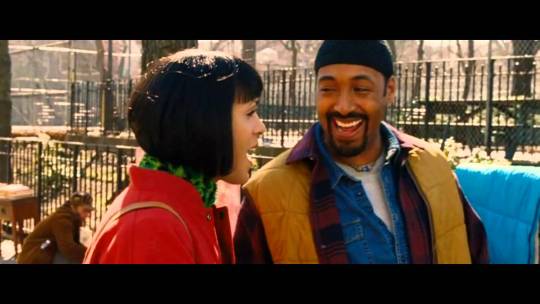
I hate you Rent. I hate you so goddamned much.
Also the 90s sees a good return to queer-coding villains. It’s always been there. It’s never really gone away, but I need to talk about the queer coding of 90′s villains because I’m sure all of you will actually recognise them.

Ah. There They are. Queer coding and Disney have a very rich history, which MANY articles have been written on. One might even say that it’s a... tale as old as time.
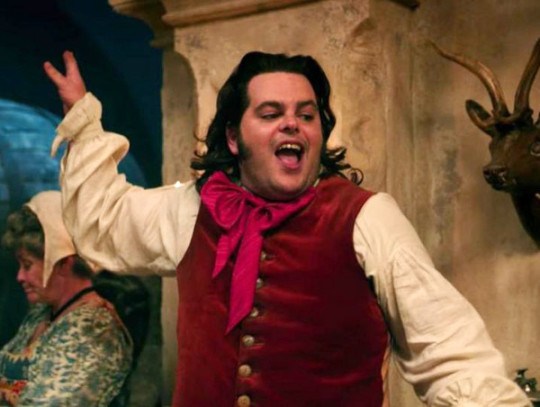
Mmmm no thank you.
But why it is so rampant, particularly in animated films, is because the films have a limited run time.
“We need to convince the audience that these characters are villains IMMEDIATELY. We don’t really have the time to waste on developing them and showing all their evil actions. We need audiences to believe when we tell them that these characters are bad. how do we do that?”
“.... make them kinda gay??”
That’s not actually how the conversation went in the board room, I’m sure, but it’s a very reduced down version. Because of the history of LGBT+ villains in the early years of cinema, animation relies on the stereotypes of villainous characters... well unfortunately those villains of old were LGBT+, so now we have LGBT+ stereotypes being passed on to new villains.
Anyway, my point is that almost all Disney villains die. Sorry that’s where I was going with this. Most of them die. The “Bury your Gays” trope is repeated here because of the villain’s queer coding. It’s not obvious, but the subtext is “Hey, if you’re a bit effeminate or do things outside of your strict gender role? Mmmmmm you deserve to die.”
“Bury your Gays” continues in modern media. Despite the importance of Brokeback Mountain, which explicitly shows a romance and intimacy between two men... Jake Gyllenhaal’s character still dies, and it’s implied that it may be due to a hate crime.
We see it in television. Buffy the Vampire Slayer, Downton Abbey, Arrow, there was a massive outcry over the trope in The 100 when a female character, after just entering an intimate relationship with another female character, is killed off seemingly senselessly.
The LGBT+ community is tired of only seeing themselves killed for shock value, character growth, or tragedy. Even Ru Paul’s Drag Race has come under fire in recent years for seemingly exploiting its contestants traumatic histories for ratings.
This is why this year’s Love, Simon was so important. The film portrays an adolescent gay character as he struggles with being open with his sexuality and finding a meaningful relationship. Simon is portrayed as a sympathetic character. He’s the hero.
And he gets a happy ending.
This is why Korrasami, a same-sex relationship in children’s media, is so important. It shows two girls achieving their happy ending together.
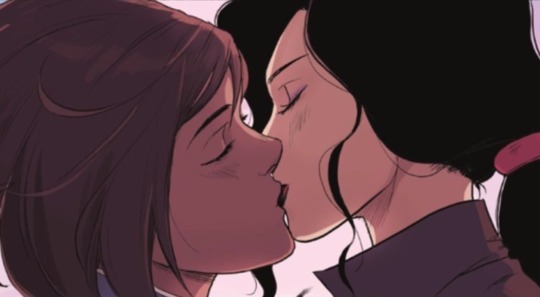
It’s why in the same year that Steven Universe portrays a same sex wedding, Adam’s death feels like such a step backwards.
The producers have stated that Adam’s death was supposed to raise the stakes of the season, it was supposed to make viewers realise the severity of the situation and overcome them with a feeling of loss, but Adam’s death doesn’t just fail the LGBT+ fans... it fails to effect viewers emotionally.
Because audiences can’t mourn a character that they have no connection with.
Most of Adam’s character was developed in interviews and not in the show, where he only spoke for one scene. The creators talked about the deep relationship between Adam and Shiro, but none of that is actually visible in the series. Taking the season at face value, Adam is just some guy who’s connected to Shiro that is killed off unceremoniously. He wasn’t even given the dignity of hero’s death, taking out even one enemy before he died. That’s what hurts the most.
His death is meaningless. It does nothing. It’s pointless.
But of course “There’s still Shiro, right?”, which is true. Shiro still exists and is confirmed a mlm, which is important, but it’s understandable why fans may not be satisfied with this. Let’s take a closer look at Shiro.
I often joke with my friends that Voltron should be renamed Shiro Suffers: The Series, because out of all the characters in the show, Shiro has definitely endured and been subjected to the worst (you could argue that Allura has, but Shiro has the joy of being tortured emotionally and physically, so I feel he wins).
The writers have tried to kill him numerous times, with only toy sales saving him. He’s been beaten, tortured, terminally ill, killed, revived, possessed and used... it’s a lot. In the old days, I used to ship shallura, not really out of feeling a real romantic connection between the characters, but just because I wanted Shiro to have someone. Someone to help support him. Someone he could open up about his struggles with. The paladins mean a lot to Shiro, but because he is their surrogate guardian, he cannot open up to them like this. He cannot show the paladins weakness, and we see this in how he keeps his disease a secret from Keith, because he does not want to burden Keith with his struggle.
The introduction of Adam wasn’t just exciting because of the potential of seeing a caring LGBT+ relationship, but because it gave fans hope that Shiro would have someone. There was the potential that Shiro might finally gain some kind of supportive relationship outside of his strict roles of “leader” and “guardian”.
Adam’s death removes that possibility. Despite how caring, generous, strong, intelligent, kind, patient and capable Shiro is written... his life is fucking awful. It’s very telling that in the final scene of the season, when every other paladin is in the hospital surrounded by their family and loved ones, Shiro is alone. He’s on a stage, giving a rousing speech to a crowd, still trapped in this role as an inspirational leader.
God, they don’t even let Shiro mourn Adam. Does he feel guilty that he was the one who supposed to die, whilst Adam lived, but now their roles are reversed?We’ll never know. Adam’s death doesn’t even give some insight into Shiro’s character. It’s truly pointless.
Season 7 of Voltron has made it clear that this is not a kids show. This is a serious show with dark themes. The writers want it to be taken more seriously.
Then I will critique it more seriously.
While I strongly doubt it was intentional, season 7 perpetuates the age old message “If you are LGBT+, you will not achieve a happy ending.” The “Bury your Gays” trope is steeped in a history of oppression, censorship, and vilification. When Adam dies, you’re not just seeing a character die, but you’re seeing the series make a conscious decision to participate in this oppressive trope. And it stings even more because the series sets two heterosexual relationships to potentially end in happiness, whilst the LGBT+ relationships have already ended in tragedy.
Why Adam? Why not literally anyone else? We had no connection to him, so it’s not like they could have used a handful of other characters for the same effect. (Kill James. Fuck that guy. And he’s young so it really would have hurt.)
And that’s what you have to question. This is why fans are upset.
I’m not writing this to convince anyone to boycott the show, or plead with you to stop watching. That’s up to you and your own belief system. I definitely do not condone harassing the writers or voice actors.
I just want people to understand why fans are so upset over season 7, and that they have every right to be. To state that the outcry is just because “fans didn’t see their ships become canon” is dismissive and cruel. Adam and Shiro’s relationship was heavily used in marketing by Netflix, so much so that you could call it queer-baiting. It was hyped at SDCC and explained as this deep and meaningful relationship, whilst the producers knew what Adam’s fate would be the whole time.
I know producers have to answer to higher ups. I know the crew were largely on edge about what would get approved and what would not.
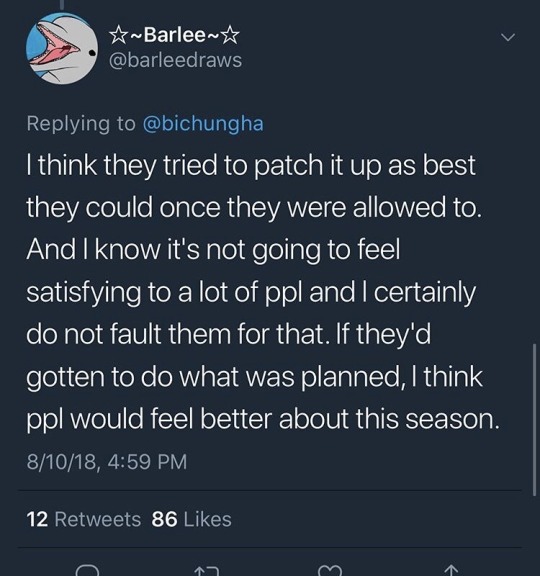
But the point remains... they still made this conscious choice. Fans don’t have to be happy about it. They shouldn’t be.
I have no idea what season 8 will bring, and at this point I feel like it might be a mess. But I encourage fans to support each other and be vocal about why you’re upset. You can’t change this show, but there’s hope that another series could learn from this.
History repeats. Until we don’t let it.
#voltron#vld#voltron spoilers#adashi#shadam#discourse#negativity#q slur#takashi shirogane#this took a while
33K notes
·
View notes
Note
Oh, do you want some angst this week? is that what you want? alright bud let's go!! 1, 3, 7, and 28 for whoever has the Most Interesting Answers!!
Thank you for sending this in!!! Under a read more both bc Prose Boy but also because the first question ended up becoming a short story with some themes of body horror in it so! look out!
1. What’s one experience your character had that made them very afraid?
I rolled amongst the characters I haven’t already discussed in depth later in this ask and got Roona. Lovely.
Being a person with near zero impulse control and a penchant for doing it just because someone said not to, I think at some point while barding alone on the road, she ended up in one of those small towns with a big secret that pop up in the thousands in D&D.
One of those places where there’s a house on the outskirts of town with the windows all locked up and the front gate rusted shut, but it’s not dilapidated, and if you listen close enough there’s still voices drifting out through the cracks. And if you ask about it in the tavern, the room falls silent and no one’s gaze is meeting yours and after a tense few seconds the bartender slides you a too-full glass and tells you “You best be forgetting about that place, it won’t do you any good.”
And you want to know so badly what happened there and every answer you get is vague until the coin purse comes out, and then the hushed whispers come out too and you start to hear things about how the family that used to live there would collect all kinds of artifacts, and one day they imported something horribly cursed, and it’s probably still inside, it’s got to be, because no one’s ever been seen leaving with it, and anyone who goes to get it back walks away with blood-drained face and shut mouth.
And so you try to sleep at night but you can’t, because you’re thinking about this fucked up house, and you’ve been to enough roadside tourist traps to know that the value’s in the show, and terror and wonder are almost the same emotion, and you’re pretty sure that this is just some long con publicity stunt that some recluse rich ass family is pulling, because rich people are fucking weird like that. And you’re not gonna call them on it, but you’d like to see for yourself, just to know if your hunch is right.
So you sneak over there in the dark of night, and you hop the fence and press your eye to the shutters of the living room, and you curse your short legs that you don’t have the best of angles, but you’re still able to make out movement inside the place, and you can see the figures milling about in profile, but it’s hard to make out since the lights are off, which granted, is a little bit weird.
But you squirm and shimmy and hoist yourself up by the window ledge and you’re still looking through the slats the whole time and you’re trying to see, you can almost get the right angle of your head and the moonlight to make out something of worth in the room, you just need to get a little bit higher and -
And you kick the side of the house and it reverberates much more than it has any right to, though that could just be the adrenaline pumping in your veins, but it really feels like the whole house has shaken, and the figures in the room all freeze in place, which is a bit worrying, but you don’t see them looking at you, which is almost a relief.
But they are looking at you. The longer you sit and wait for them to go back to their business, the more you realize they’re waiting for you to leave. They can tell you’re here and you’re not supposed to be, so everything comes crashing to a halt, and they’re looking at you, so you know that you’re the disruption.
But you didn’t realize until now that’s what they were doing, because they don’t have faces. It’s smooth skin, no sign even of eye sockets or cheek bones or nose bridges, just blank skin, like a mannequin come to life, but even with nothing there you can still feel them staring and you want to run away as fast as you can but you’re too scared too move.
You become scared enough to move again once one of them begins to move towards the window that you’re at, and you hop the fence once more and high tail it back to the inn, hand on the hilt of your sword the whole while. And you slip back into your bed and wish you’d heeded the warnings to stay away, because even though you checked over your shoulder a thousand times to make sure they didn’t follow you, it still feels like the lack of eyes is staring right at you from the dark of every corner in your room.
And you don’t sleep well again until you’re miles away from that town.
3. Have they ever lost a loved one? What happened to them, and are they the same as before they lost them?
These are d&d characters and I’m a tragedy slut so long answer short, yes, approximately half of my characters have key backstory moments revolving around the death/betrayal of a loved one.
Craving, Tov, Stella, Ezra are Supremely Emo, with Gildy and Nissy being lesser versions but still fitting the prompt.
Craving: Her entire life has been a series of deep losses that fundamentally changed the way she grew up. First person she lost was her mother, Kaissa, who died of a mysteriously incurable illness and whose public autopsy was revoked by the city for reasons no one could figure out. It broke her trust in authority, in public figures. The medical sector had refused to treat her mother and then hidden the evidence, it was as good as murder, and she figured every seat of government had as much blood on their hands.
The second to go was her father, Anvan, one of the first victims of a plague that devasted the tiefling population of their city far worse than any other race. He died before a vaccine was developed, but it wouldn’t have mattered any ways, because it was distributed in a horribly biased fashion by the producers which benefitted the human populous first. Not only did this break her trust in money, as a tool for growth and prosperity and caused her to see wealth as possessions as a tool for cruelty (which, you might ask, doesn’t she want wealth? doesn’t she steal impulsively? yes. she does it to be cruel right back at the world.) BUT it also was the moment at which she really lost her youth, because with the death of her father, she had to go into working full time.
The last to go was her brother, Sirris. He was stabbed and burned to death in a hate crime attack on their store. She went into the back room that day as a broken but loving woman, and crawled out of the ashes dragging her brother’s body behind her as a hell-bent, rage-blind servant of eye for an eye retribution. She was going to tear this world down from the inside, and she is still barely starting to learn that there are some things that don’t deserve to be crushed in the wreckage.
Tov: He went to the Shadowfell to get some sorcery powers and when he walked back out he did a little attempted murder on his brother, who funnily enough Did Not Like It, and cast Tov out of his clan and his life, out of everything he’d ever known. Tov stood on the shores as his brother boarded the boat home alone and the second the ship was out of sight, he became a shell of a man that he’s still trying to fill back in.
Stella: Her entire community got burned to the ground and only a handful of survivors made it out, and she had to go from balance-oriented hippie kid to Literal Fucking Assassin to survive so uh. She got lost in a world where she had to become mean and cold and emotionless in order to stay living, and if she’s being honest, made it a lot easier to deal with the fact that Literally her Entire Life was irreparably gone.
Ezra: His sister died on a quest for his God, after being promised saving by his God, and failing to be resurrected by clerics of his God. It made him stop believing in God. Like that one’s super duper straightforward.
Gildy: Not nearly as emo, but her spouse passing of old age and leaving her alone in the house made her finally realize that her life is. Hers. And that’s it. And kicked off her quest to do things that actually interest her and get into 3D art and forging and eventually a lifestyle of travel and adventure in the name of her art. She focused on herself for the first time in her life and maybe its just it being 1 am but I am a little bit soft about how that deep deep loss of a spouse was a catalyst for one of the most unabashedly happy times in this woman’s life because she finally didn’t have to care about pleasing anyone but herself!
Nissy: He eloped with his girlfriend and then got dumped by her and he realized he kind of sucked shit on his own and decided to go adventuring to prove himself about it. At the time I played him he was fresh out of the breakup so he hadn’t changed much, but I feel like by the time he gets back home he will actually be much more sure of himself as a person who has value and worth and deserves a place at the table as he is, because that’s what being with Mavy had started to teach him, and after she left he was able to internalize it better bc there was no external source to pass it off onto.
7. If your character was allowed to murder one person without any consequences, who would it be and why?
Stella would kill Geran, the man who caught her assassinating and promised her a clean wipe of her criminal record in return for a year of SUPREMELY sketch and manipulative personal guard work. She knows she can’t do anything to him because if she fails he turns her in himself, and if she succeeds one of his lackeys does, but he’s also an absolute creep and a sleazeball and she hates his guts and the world would be better off without his freakness in it. Hey actually Rebekah this guy would make a great fourth character for Ludo.
28. What is your character’s greatest strength?
Is it not the essence of a queer person’s D&D game that every character’s greatest strength boils down to a unfathomably deep love and devotion to whatever persons or tasks they deem worthy?
1 note
·
View note
Text

Nicole Maines once offered lessons in becoming herself. Now, she becomes someone else for a living.
The Maine native first made headlines as an anonymous student who sued her school district in 2013 over bathroom discrimination. School officials had barred Maines, who is transgender, from using the women’s bathrooms. She won her case, and eventually went public to describe the experience in the family memoir Becoming Nicole: The Transformation of an American Family.
Maines’ activism also led to on-camera appearances in television and film discussing her experience as a transgender American. Her natural charisma also led to acting opportunities, including appearing as the first transgender superhero on American television with her role as Dreamer/Nia Nal on The CW series Supergirl, produced by Greg Berlanti. Last year, she also earned acclaim (and a Queerty Nomination) for her work as a vampire in the indie horror film Bit.
With her star on the rise, Queerty snagged some time to chat with Maines about the unusual trajectory of her life, her newfound acting career, and her survival lessons for the COVID-19 lockdown. Supergirl airs Sundays on The CW.
So, I must say, with everything going on I feel obligated to ask: how are you right now? Are you ok?
Thanks for asking. I’m really good. I came down to Austin; I’m staying with my parents. I try to keep myself busy any way I can. I’m playing lots of video games. I just re-downloaded Skyrim.
Oh yes.
I’m doing a playthrough. Always fun. I got Disney+, and they released the final season of Star Wars: Clone Wars, which was a big show when I was a kid. I love it, so I’m rewatching. It still holds up. It’s amazing. And I’m doing art with my tablet. I sit in bed and doodle away.
Maines as Dreamer in ‘Supergirl’
Sweet. So you’re one of the most prominent trans actors on television. I don’t want to call you a trans action hero; that makes you sound like an ATM.
[Laughter]
Trans superhero, yes.
What kind of responsibility is it to play a character like Dreamer, the first transgender superhero on TV?
I feel like being the first for anything has a certain amount of pressure. You’re setting where the bar is going to be. You want to set it as high as possible because you don’t want to be the one that messed up. It’s like oh, she messed up. No more trans superheroes!
[Laughter]
Right.
So I want to do so well so we can continue to have trans superheroes. Fortunately, the response has been responsible. People love Nia, the character. People who aren’t trans love the character, which is almost cooler than hearing that trans people love Dreamer. I was pretty sure that the response from the trans community would be very positive. My own reaction was so excited, so I knew the community would love it. But the number of cisgender people that come to me and say “Dreamer is my favorite character. She’s my favorite superhero.” Aside from her transness, she’s a really special character. She’s just awesome, and its been amazing to see people love her as much as they do.
It’s true. In looking at the show, what strikes me—you’re right—is that it’s not about her being trans. It’s about a woman in an extraordinary situation, who happens to be trans. It’s her relationships with characters like Kara and Brainy that are so relatable. She’s a woman finding her purpose.
Absolutely. It’s a true coming of age story. Her transness isn’t the biggest part of her story. Coming into Season 4, the biggest problem on her mind wasn’t her transness. It was seeing the future in her dreams and not knowing how to handle it.
She’s just trying to get through the day, yeah. It’s so simple that way. Nia has obviously been a huge part of defining your career. And you’re not even old.
Can that please be the headline?
[Laughter]
I’ll keep it in for sure. But this role, by the way, will follow you for the rest of your life. You will be forever associated with her. Is that daunting?
I mean, I think it’s exciting. It’s very exciting to craft this original character and see her thriving among all the major DC players. Crisis [a storyline that crossed over on The CW superhero shows] was so crazy for me. To watch it and see Dreamer, the first trans superhero, up there with Batwoman and Supergirl and The Flash. That was so cool. So I’m excited to have this character follow me. I’ve had so much fun. And I’m so attached to the character personally. I’m protective of her. She’s my baby.
That’s wonderful. You’re an actress who specializes in playing characters with extraordinary gifts. I want to ask about another character you played in a film called Bit.
Yes! Let’s talk about Bit.
It’s a cheeky, fun comic book horror film that you carry as the lead. You were nominated for Best Performance at the Queerties. I hope you are aware…
Yes, and I was so shocked, first of all, because it’s a genre film. So often, genre films don’t thrive in that kind of environment.
It took me by surprise at Outfest last year. I talked to Brad Michael Elmore, the director.
He’s one of my favorite people ever. He’s so smart and talented. He did such an amazing job writing this script. It’s so special. He’s very aware—and will be the first person to say–”I’m not the person who should be telling this story. I’m the straightest, cis guy out there. But I don’t see anyone else telling this story, so I’m going to.” And he did. He’s using his platform and privilege to lift people up. And he did a f*cking cool movie starring queer women.
Totally.
We had a female DP, which is huge. The whole movie was so amazing. The script was brilliant. Instantly, reading it, I fell in love. I hope people get to watch it soon. It’s just cool.
It’s cheeky fun. It’s kind of a female version of The Lost Boys, and I really related to the characters.
Yeah.
So it’s your first movie.
My first and only movie. I’m always on the phone with Brad. “Bradley, when are we making another movie? I’m getting bored.”
[Laughter]
So was it intimidating carrying the whole movie your first time out?
Terrifying. Dreadfully terrifying. I don’t know if anyone knew this, but I have no idea what I’m doing up here. I don’t have formal acting training. I’m not a Julliard actor. I haven’t been doing this for years. I show up and it’s like playing dress-up, you know? And on Supergirl too, I’m acting with juggernauts. It’s my first major [job] and I’m doing scenes with David Harewood. Cool, no pressure.
[Laughter]
I have to live up to something. I have to keep up with that. All of it is very scary. With Bit, trying to keep up with Diana Hopper and James Paxton. Most of my scenes are with them, and they are both so phenomenal. Acting is the most terrifying thing I’ve ever had to do. I have virtually no control over anything. I just try my best. And I’m really happy with Bit, and the response has been better than any of us could have asked for.
That’s marvelous.
It was supposed to be coming out soon, but the virus sort of threw that. I hope people get to see it soon, and I hope they get to see it in theatres.
It’s a film that I think will have a following. When I talked to Brad, he mentioned that he had read your book and consulted you doing research for the part. Then he decided he should cast you in the lead.
Yeah.
Were you at all reluctant to appear in a very queer film written by a cis straight man?
I didn’t really think much of it. The writing spoke for itself. It was phenomenal, well written, well researched. He’d talked to trans folks and read books. He knew what he was writing; he’d done his research to make sure it’s done well. And he made a movie where the trans character, like Nia, where her transness is not the only interesting thing about her. Brad knew: queer people are more than who we sleep with or where we use the bathroom.
Yes.
I found that very refreshing.
Well, and I’m not sure I should say this, but I did tell Brad: the first time I saw the movie I didn’t even catch that she was a trans character. I just thought Laurel was a woman played by an actress who happens to be trans, and that was it.
And that’s the beauty of it. It’s not something a lot of people are going to catch unless they’re looking for it. You catch it in certain places. It is there, and if you know to look for it, you understand. But otherwise, it’s not really pertinent to the situation. When we first meet her, with Laurel driving to Los Angeles, she’s passed a point in her life where her transness is her biggest issue.
Exactly.
Her biggest issue is her selfishness, and that now she has to kill people. She doesn’t want to kill people. It’s a story of a sort of amoral teen trans lesbian vampire.
I love it. When I talked to Brad, it was obvious he had this world very defined in his mind. Have you talked about doing another one? He hinted…
Yeah. It’s a possibility. Of course, I’m like yes, let’s do a trilogy. I want Bit Part II. I want to do all the movies. I have a running joke with him and James that Brad will be like 80 in a wheelchair, and James and I will be in Bit 16. We’ll never stop.
It worked for Star Wars.
I think it has the makings for a sequel, but first we need it frigging released.
So what else do you have coming up? I know Supergirl is coming back for Season 6. Are you part of it?
I believe that I can say I am, yes. I’m not going anywhere.
Beyond that? Other movies?
My life has just been Supergirl and Bit the past couple years. It’s funny: I see other folks doing other projects while they’re a regular on a series. And I’m like how do you have the time? It’s all I can do to get a night’s sleep. So right now it’s Bit coming out and Supergirl Season 6. I talked to the showrunner, and he told me what the plan is. I’m really excited. It’s a cool concept.
And I’m sure you can’t tell us what that is.
I can’t say anything.
It figures. Anything else you’d like to add?
Stay indoors. I feel like this could all be over sooner if people would just. Stop. Going. Outside. For stupid reasons.
Right?
Supergirl airs Sundays on The CW.
Queerty.
2 notes
·
View notes
Text
On Point With: Magdalena Femanon

Sporting club looks that are equal parts darkly dramatic and campy, this Lady of the Haus of Femanon strikes a towering, memorable figure as she vamps across the dancefloor on stilts. An actress of stage and screen and a performance artist across all media, there are few people in the city’s nightlife more compelling than Magdalena Borlando, better known on the scene as the incomparable Magdalena Femanon.
Thotyssey: Thanks for talking to us today, Magdalena! So, crap, it's already the second week of August... how's your summer been so far?
Magdalena Femanon: Hello! Yes, summer’s definitely ending; however, the next and last few weeks will definitely be the most exciting for me out of the season. But so far, it's been pretty solid. Got to film a couple projects, see one of them premiere at a distinguished film festival, and Pride was wild this year. Working hard, playing harder.
Exciting! You're an actor, a visual and performance artist, a makeup artist, a nightlife personality.... I'm sure there's even more to add here, but when somebody asks that terrible question "So, what do you do?" how do you usually respond?
I typically respond with "actor and performance artist." I think those two really encompass all I do and include the other tools I use such as makeup.
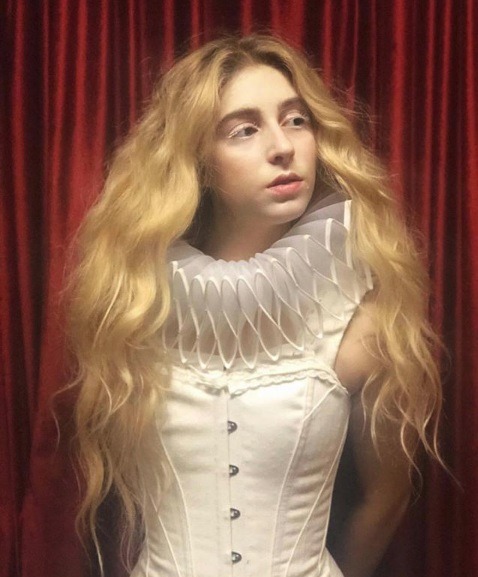
Did you have any idea, growing up, that your life and career would be so diverse, and encompass so many different elements of expression?
Oh, I was always a performer, and knew I wanted to pursue performing professionally. But I definitely jumped around among the art forms before I chose to be an actor. However, in college I started to feel a bit stifled. As an actor, I feel that at this point I have to keep a certain physical "brand," and I am getting called in for roles that suit this physical "brand." Discovering and entering nightlife was so special and fulfilling because it gave me limitless self-expression visually, and gave me a space to create these characters! My constant goal is always to be able to merge the two--that is, see these characters on stage and film, which I have thankfully been able to do a bit over the past year.
Where are you from, and how long have you been in New York?
I've been in NYC for six years now. I was born in Argentina, and moved to the states when I was around three years old with my parents to outside Philadelphia.
Oh wow!
Always my surprise fun fact.
Do you feel an attachment to that Argentinian heritage, still?
Definitely. My whole extended family still lives there, so I'll visit every few years. And I continue to speak Spanish at home. When I was in college I helped form a bilingual theatre company, and was focused on devising and / or producing Latin theatre. I'm always down to incorporate Spanish language into a piece if it works, like I recently did in a piece I helped create, actually... with a couple other members of my drag family, the Haus of Femanon. I would like to be doing more of that.
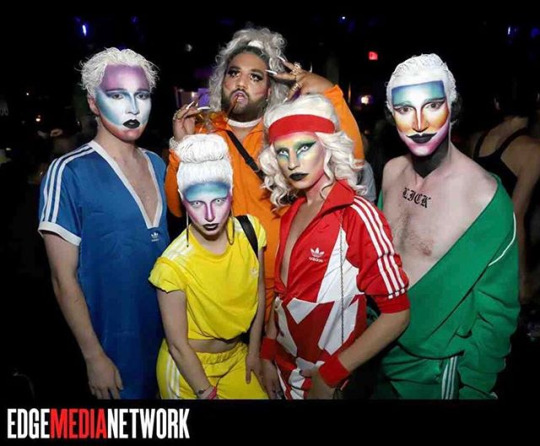
That sounds fascinating! You certainly have tons of credits on your acting resume, both stage and screen. But of course I have to be Basic and focus on your two episodes of Law & Order: SVU! What was it like working on that show? I bet production is a pretty well-oiled machine.
Haha, that was pretty sweet, yes! Well-oiled machine is right. I mean, 20 seasons! They know what they are doing, and how to do it quickly. The couple episodes I shot aired two / three weeks after I shot them.
That must've been extraordinary to watch them from home, I bet the whole family was watching!
Oh definitely... all while trying not to cringe at the subject matter, haha!
youtube
Speaking of family.... the Haus of Femanon! First of all, how were you introduced to the world of NYC nightlife, and then how was Magdalena Femanon born?
The Haus! Well, four out of five of us--Peroxide, Détroit, Mr. He, and myself--attended Pace University, studying within the performing arts department. We were not close at all as a group yet, but we each knew that each other wanted to create looks / try drag / express herself in another, different way than we were getting from school. So we found a flyer for Ladyfag's Holy Mountain (RIP), and we went out in these terrible looks. We were so ugly, but we discovered something special that night--as well as meeting a very special person, Lick, our last member. We started going out all the time, to every party, and immerse ourselves in this world. After a while, we started collaborating on stage and in film as well.
I think Magdalena Femanon was born out of frustration. I was trying to discover who I was / wanted to be, struggling to feel comfortable with myself. And then on top of that, no one could see me! Literally. I am a very petite gurl, to put it graciously. Even in the tallest of heels, I couldn't talk to anyone as they towered over me. No one wants to bend down for more than five seconds to talk to anyone, especially with music blasting. Within a few months of starting to go out with the Haus, I was at a theatre / performance festival and saw a street company perform wearing stilts. I got home that night, and ordered a pair of my own. I also did it to be Extra; I live in a world of extremes. So now I have metal legs for dayz, and the constrictions of them actually really influence and allow for more creativity in what I do. Stilts definitely changed the game for me and were probably the official birth.

[photo by Peroxide]
Stilt-walking in these crowded spaces must be a challenge!
At first I was definitely a bit wobbly...and CRAZY, when I look back on some of the things I did. But you find balance quickly, and it's mostly mental--telling yourself you won't fall.
So, did you sort of build your looks and fashions around being this tall creature on stilts?
It's usually the first thing I think about when I have an idea for a look. It was challenging at first, especially since I'm not a damn seamstress in any way... but definitely fun. I make it work.

By the way, how did you come up with “Femanon” as a family name?
Mr. He actually coined it officially. It takes from the words “femme,” “phenomenon" and “anonymous.” We wanted to be a Haus as a way to collaborate and perform as a unit, even though we each do our own individual projects as well. I see it as paying homage to the houses of the NYC Ballroom scene. I still gag a bit when I think about how I get to host Battle Hymn with, like, Grandfather Hector Extravaganza or Javier Ninja.
That is quite a legacy! The first time I saw your name, I believe you were doing Kayvon Zand’s party at Webster Hall. Do you miss that space?
Oh yes...Webster Hall. That was a really fun time. Really a shame it needed to close... I read it will be more of an arena now, and less dance nights? Lame. A part of New York and gay / queer history. Yes, Kayvon's party was great...the kids were HUGE in size at that time... getting up those stairs was not a joke, haha!
It’s hard to explain the appeal of those types of parties (Holy Mountain, Battle Hymn, etc) with club kids in these extravagant looks to people who have never been. How would you explain what makes them great?
It IS very difficult to explain, and people ask all the time. I do not think there are too many places that could full-on celebrate us for being freaks. It's like the watering hole--the place where you go and meet up with a community of people like yourself. The parties are freeing, even if you are not dressed up. Everyone is welcome... unless you're a Nazi. It's a place to meet other artists and collaborators. All of these things add to the appeal.
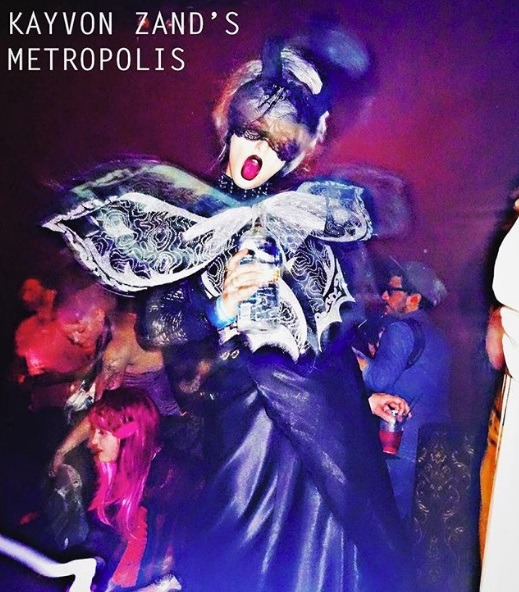
I was just talking to the Haus of Sterling, and they were marveling about Femanon’s edgy, dark looks. Is that a good description?
I would say that's pretty accurate. With the exception of Détroit (who herself is so over the top campy) none of us go for very human-like personas. I mean, we are glamorous the way a blood-sucking alien is glamorous. We love horror, we like looking other-worldly, we like black and white, we would rather scare you than make you swoon over how elegant we look.
Tell us a little more about the kind of performing art that the Haus does.
For short nightlife gigs and for events such as Bushwig, we usually do campy numbers involving interpretive dance, usually something relevant in pop culture at the time, and there's always a slight element of gross.
Mr. He was part of a theatre ensemble last year and invited Lick and me to join for the last few productions, where we played characters also very similar to campy nightlife personas. Very much about the look. Very queer. Very camp.
Recently, Peroxide and I starred in a short film which was set within the frame of nightlife called Like Glass. The project was very close to Peroxide and me because although the characters were fictional, the themes were very much those of our lives and something we were eager to share through this medium. It's gotten into a couple of festivals at this point, and I hope it goes farther.
youtube
As far as this weekend goes, it appears that the Haus will be up in Sugar Loaf, NY for an August 11th festival called Dusklit, What is that exactly, and what will the Femanons be doing there?
Dusklit is an annual one-night interactive art festival. The art ranges from immersive performances, to pieces in site specific environments, music, puppetry, poetry, sound installations, etc. We performed last year and had a blast, glad to be back this year.
This year, we are doing a piece called "INTERWEB:secrets" about the comfort of anonymity on the internet. Participants can share their secrets in the web we create for them, as well as take a secret back with them from an unknown person. We hope to create a massive web of secrets by the end, and have it be an amusing--if not cathartic--experience for people.
The Haus will also be camping in upstate New York together. CAMPING. Five clowns in a tent. It will be quite a show for all involved.
That would be something to behold!
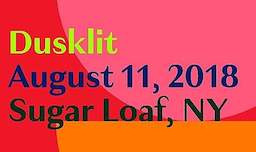
Back in the city, August 18th is KUNST, Goddess of Club Fashion Susanne Bartsch’s seasonal raver at Elsewhere. You’re gonna be hosting!
Yes! I like Kunst because it's in an immersive Brooklyn venue, there’s good DJs, and Ithere will be several performances. My babe Baby Yors is performing this time, so can't wait to see him.
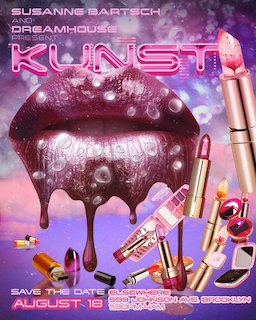
Yeah he’s great! Looking ahead, on September 8th at the Paramount Hotel, Susanne is presenting Belladonna, a party and lewk contest. This is a great idea! And it should be epic. Are you hosting, or actually competing?
Belladonna will be epic... I'll be there as a host for sure, but everyone better bring their best lewks. I hope to see those few nightlife gems that only come out once in a while for special occasion look parties, that always slay us. I can't wait to see how it turns out.

Anything else on the agenda?
Well, my nearest project after Dusklit is my trip to Black Rock City in a couple weeks for Burning Man. I'll definitely be bringing the stilts and a few looks I have as I stomp through the desert. Focused on preparing for that now.
That’s gonna be so Fury Road! Okay, last question... if the Haus of Femanon ever decided to take in a new member... what would her required credentials be?
“Adheres to Slender Man, willing to submit to cult rituals, and NOT vegan (as our vegan quota of two members max has been filled).”
Very reasonable! Thank you, Magdalena!

Check Thotyssey’s calendar for Magdalena’s upcoming appearances. Follow her on Facebook and Instagram, and visit her website.
On Point Archives
4 notes
·
View notes
Text
Bill Rauch, who last February was appointed the first artistic director of the performing arts center at the World Trade Center in New York, was sitting in a theater near his home some 3,000 miles away in Ashland, Oregon last October watching the final performance of a play in his penultimate season as artistic director of the Oregon Shakespeare Festival.
In the play, “Manahatta,” a character was warning about the horrors of living in New York:
“Let me tell you something about Manhattan. When you’re not from here, when you’re from somewhere else, this place can be hell. It’ll eat you up….There will be days when you think everyone is against you.”
A few days later, sitting in his office on the OSF campus, I recited the line back to him. Bill Rauch laughed. He’s not worried about being eaten up. “I’ve always loved New York. I’m excited about having my family live there,” he said, in front of a framed “YES” hanging on his wall.
Next month — next week! — marks the beginning of his final season in Ashland, a season that, as usual, will feature 11 plays (see below), including two plays that he will direct, one of them in both Spanish and English. The season will be marked by the twin concerns, innovation and outreach, that have characterized his entire time at OSF, where he became the fifth artistic director in June, 2007.
After that, in August of this year, he will move to New York to begin working full-time planning the Ronald O. Perelman Performance Arts Center, which will open at the World Trade Center in September, 2021 – the twentieth anniversary of 9/11.
In the meantime, “I come on average once a month to New York. I meet people – members of the Board, leaders of arts organizations, community organizations.
It’s really a lovely time for me to be able to learn, absorb and to dream. I know there will come a time when there will be a locking down for the first season. I’m trying to live in the joy and the freedom of just being able to explore.”
Scene from “Manahatta” by Mary Kathryn Nagle, at OSF 2018. Se-ket-tu-may-qua (Steven Flores) and Dutch trader Jakob (Danforth Comins) exchange furs and wampum on the Lenapes’island home of Manahatta. Photo by Jenny Graham
Aptly, the play “Manahatta” was set within walking distance of the planned center, taking place alternately in 1626 and 2008, both of which are significant – and shameful — dates in New York City’s history, the second the year Wall Street bankers caused the financial crisis, the first the year the Dutch West India Company “purchased” Manhattan from the Lenape (who had no concept of land ownership), .
“The Dutch didn’t think the Lenape spoke because they didn’t speak English,” Rauch said. “The exploitation was conducted by Christians and capitalists hand in hand.”
“Manahatta” playwright Mary Kathryn Nagle was only the second Native American to be produced at Oregon Shakespeare Festival in its 83 years (the first was in the 2017 season; the third will be in the 2019 season.) It was the kind of play that has marked Rauch’s tenure at Ashland.
But such work is unlikely to characterize the programming at the Perelman Center, named after Ronald O. Perelman, the billionaire investor and philanthropist whose $75 million donation in 2016 got the long-delayed project back on track. For one thing, “the Perelman Center will be multidisciplinary.” Its three venues (which are being constructed with the flexibility to combine into two or even one large space) will be home not just for theater, but dance, contemporary chamber opera, music and film (a venue for the Tribeca Film Festival.)
While the Oregon Shakespeare Festival dominates its region without much competition, the Perelman will join a growing number of venues for the performing arts in New York competing for attention.
For Rauch, the change sounds…radical. “I’m very aware that New York has a different energy. Some of the most talented artists in the world, both celebrated and early career, are in New York.”
On the other hand, the city is hardly foreign territory to him, and not just because Rauch was the director of “All The Way” both in Ashland and on Broadway, where it won the 2014 Tony Award for best play. (The Broadway shows “Head Over Heels” and “Indecent” – which is being revived in Ashland this season — also originated in at OSF during Rauch’s time there.)
Rauch was born in Red Bank, New Jersey (“home of Two River Theater,” he says) and started going to theater in New York at the age of 12 – first, “Shenandoah,” “A Chorus Line,” “The Wiz,” then the Wooster Group and Charles Ludlum. At 13, when his family moved to Westport, Connecticut, he volunteered as a volunteer usher at the Westport Country Playhouse, working up to head usher and janitor by the age of 16. “I was obsessed with theater,” he said. “I became a director because I saw the shows there over and over, like The Master Builder by Ibsen with Jane Alexander and Richard Kiley.” Vincent Price, while performing at Westport, helped cement Rauch’s choice of career. “He made me take my parents backstage and gave them a lecture: ‘There is no profession that requires more of your mind and your heart and your body.’”
His senior year at Harvard, “I invited people to be part of a company with me.” That soon segued into Cornerstone Theater, where he served as artistic director for 20 years, until he was hired to lead OSF. Founded as a traveling ensemble adapting classic works to tell the stories of both rural and urban communities, Cornerstone is now based in Los Angeles, but in its early years it had its office on West 23rd Street (“now a bed and breakfast), and performed extensively in the city.
Rauch, then living in L.A., was scheduled to be in New York City on September 11, 2001. “I was supposed to fly to New York that day, to attend the Leadership for a Changing World at Ford Foundation. My husband and I had an argument. I wanted to go.”
How much, I ask, will 9/11 inform the Perelman Center?
“There’s no way you can start up on that sacred ground, and not have it inform every choice,” Rauch answered. “That doesn’t mean it will be relentless 9/11 art
The whole notion is a response to 9/11. It’s about building community and building hope, and bringing people together. It’s about creating work that contributes to the discourse as a society. It’s about expanding what we mean by world trade. That’s the point. And that’s certainly what attracted me to the job.
“I want Perelman to be a local resource for Lower Manhattan – I had no idea how residential Lower Manhattan has become – as well as for all five boroughs of New York. I also want people from all over the world to go to the World Trade Center. I’m excited by the possibility of doing work that’s local and domestic and international, professional and community based; work that interfaces with community will be important to me. That blend will make it unique.”
“PAC” is where the Ronald O. Perelman Center for the Performing Arts will be located on the World Trade Center site.
Bill Rauch’s Last Season at the Oregon Shakespeare Festival
Meanwhile, Rauch planned 2019 at the Oregon Shakespeare Festival, he said, “under the weight of knowing it was my final season. It was going to be different.”
Oregon Shakespeare Festival’s 2019 season includes
Indecent July 4 – October 27
As You Like It, March 1 – October 26
Macbeth, May 28 – October 11
Alls Well That Ends Well, May 30 – October 13, 2019
Alice in Wonderland May 29 – October 12
Hairspray Marcy 2 – October 27
Between Two Knees April 3 – October 27, 2019
How to Catch Creation July 23 – October 26
Cambodian Rock Band, May 26 – October 27
An encore of Paula Vogel’s Indecent, which began at OSF and went on to win two Tonys on Broadway in 2017.
Three plays by Shakespeare
Eva Le Gallienne’s adaptation of Alice in Wonderland
A revival of the musical “Hairspray”
“Between Two Knees,” a comic retelling of Native American history created by the 1491s, a comedy sketch group made up of a “gaggle of Indians” (the third-authored play at OSF)
“How to Catch Creation,” Christina Anderson’s exploration of the universal act of creation through the experiences of a black, queer, feminist writer
“Cambodian Rock Band,” Lauren Yee’s remarkable play that combines a rock concert with a tale of reconciliation and genocide.
Mother Road March 3 – October 26
La Comedia of Errors June 29 – October 26, 2019
It also features two plays that Rauch will direct himself, which share the same cast. “Mother Road” by Octavio Solis, which opens March 10th, is inspired by John Steinbeck’s The Grapes of Wrath, now celebrating its 80th anniversary. “The Joad family descendents go back from California to Oklahoma. “
He will also direct La Comedia of Errors, a bilingual adaptation on which he collaborated with Lydia G. Garcia (“My Spanish is above intermediate and below fluent.”). “La Comedia will be touring – a way of reaching low-income communities”—yet more innovation and outreach from Bill Rauch.
Bill Rauch on Leading New York’s Performing Arts Center at the World Trade Center, and Leaving Ashland, Oregon. Bill Rauch, who last February was appointed the first artistic director of the performing arts center at the World Trade Center in New York, was sitting in a theater near his home some 3,000 miles away in Ashland, Oregon last October watching the final performance of a play in his penultimate season as artistic director of the Oregon Shakespeare Festival.
0 notes